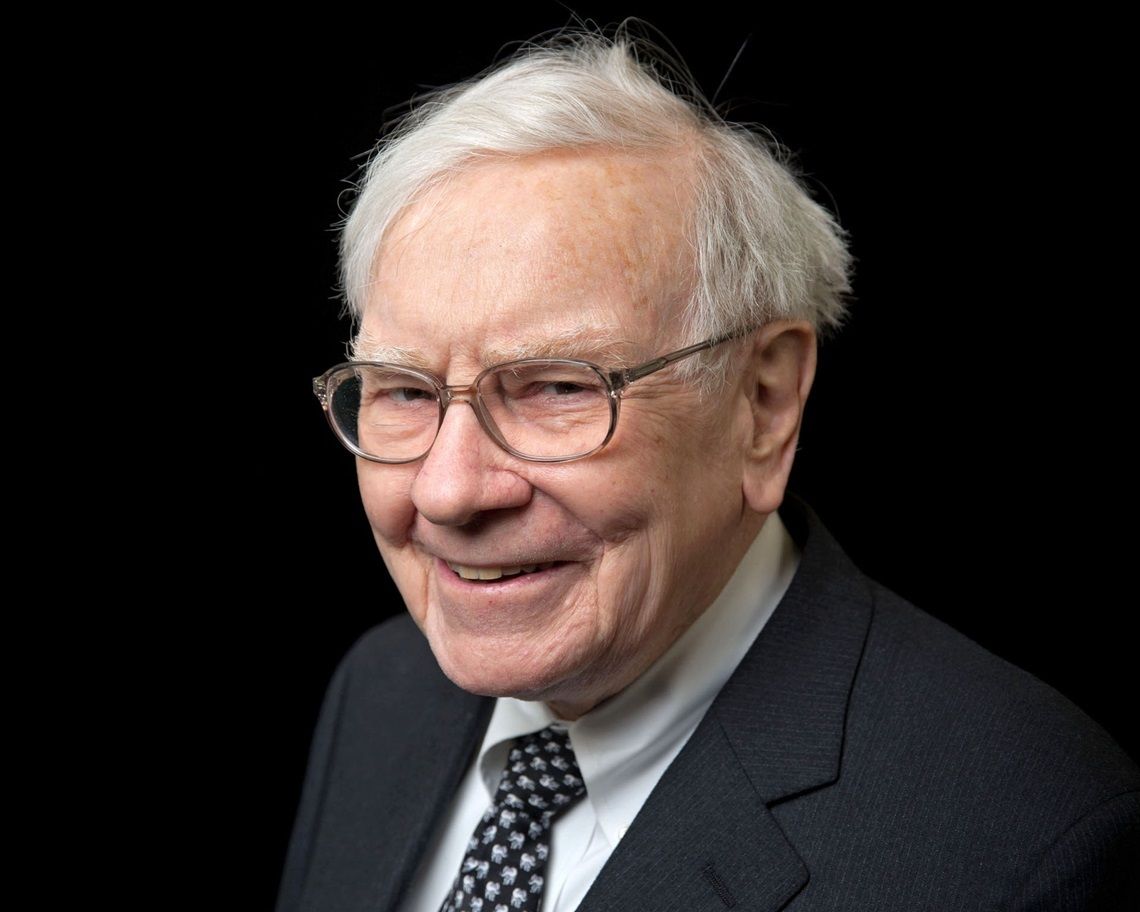- AiartGallerie(Invest)'s Newsletter
- Posts
- Warren Buffett's Strategic Exit from S&P 500 ETFs: Analyzing the Underlying Rationale
Warren Buffett's Strategic Exit from S&P 500 ETFs: Analyzing the Underlying Rationale

Photo from Investopedia
The recent disclosure that Warren Buffett's Berkshire Hathaway fully exited its positions in the SPDR S&P 500 ETF Trust (SPY) and the Vanguard S&P 500 ETF (VOO) has sparked intense speculation among investors. This move, detailed in Berkshire’s latest 13F filing, marks a significant shift for a firm that has historically championed low-cost index funds as a prudent investment for most individuals. While the stakes in SPY and VOO constituted a mere 0.02% of Berkshire’s portfolio, the symbolic weight of this decision cannot be understated[2][5]. Below, we explore the multifaceted rationale behind this strategic pivot, synthesizing insights from market analysts, structural comparisons of the ETFs, and Buffett’s long-term investment philosophy.
Market Valuation Concerns: The Primary Catalyst for Divestment
Overvaluation Signals Across Key Metrics
Central to Buffett’s decision is the S&P 500’s current valuation, which multiple models flag as overextended. The Buffett Indicator—a ratio of total U.S. stock market capitalization to GDP—stands at 197%, nearly two standard deviations above its historical average[1]. This metric, famously endorsed by Buffett himself, suggests that equities are trading at levels disconnected from economic fundamentals. Similarly, the S&P 500’s price-to-earnings (P/E) ratio has surged past 25x, well above the 15x historical norm, indicating that investors are paying a premium for earnings that may not materialize amid slowing corporate profit growth[1][7].
Historical Precedents and Mean Reversion Risks
The S&P 500’s mean reversion model further underscores this overvaluation. Historically, periods of extreme valuation have been followed by prolonged corrections. For instance, the index’s 10-year cyclically adjusted P/E (CAPE) ratio now exceeds 30x, a threshold last seen during the dot-com bubble. Such levels have historically preceded average annualized returns of -2% over the subsequent decade[1]. Buffett, a staunch advocate of buying undervalued assets, likely views the current market as offering an unfavorable risk-reward profile, prompting his exit from broad-market ETFs[7].
Geopolitical and Macroeconomic Risks Amplifying Caution
Escalating Global Tensions
Buffett’s decision also reflects growing geopolitical instability. Ongoing conflicts in Eastern Europe and the Middle East, coupled with rising U.S.-China tensions over Taiwan, have heightened the risk of supply chain disruptions and energy market volatility. The recent alignment between Russian President Vladimir Putin and Chinese leader Xi Jinping further complicates the global economic outlook, potentially ushering in an era of bifurcated trade networks and inflationary pressures[1][7]. For a long-term investor like Buffett, such uncertainties necessitate a defensive posture, favoring cash or hard assets over equities tied to global growth.
Domestic Political Uncertainty
The 2024 U.S. presidential election has introduced additional volatility. Billionaire investor Ray Dalio has warned of a 35-40% chance of civil unrest, depending on electoral outcomes and policy shifts[1]. While Buffett has historically avoided politicizing investments, the potential for regulatory changes (e.g., tax hikes on capital gains or corporate profits) could erode equity valuations. By reducing exposure to S&P 500 ETFs, Berkshire hedges against policy-driven market shocks.
Strategic Reallocation Toward Defensive Assets
Preference for Cash and Opportunistic Holdings
Berkshire’s exit from SPY and VOO aligns with its broader strategy of accumulating cash reserves, which now exceed $167 billion[7]. Buffett has long emphasized the importance of liquidity during market downturns, enabling opportunistic acquisitions of undervalued assets. Recent purchases, such as Constellation Brands (STZ), suggest a pivot toward companies with resilient cash flows and pricing power, even in inflationary environments[5].
Shift to Inflation-Resistant Sectors
Concurrently, Berkshire has increased stakes in sectors like energy (e.g., Occidental Petroleum) and consumer staples, which tend to outperform during periods of stagflation. This reallocation mirrors the advice of analysts who recommend defensive equities and precious metals as hedges against macroeconomic turbulence[1][7]. By divesting from market-cap-weighted ETFs—which are heavily exposed to overvalued tech stocks—Buffett positions Berkshire to weather a potential sector rotation.
Structural Limitations of S&P 500 ETFs
Fee Differentials and Tracking Efficiency
While the choice between SPY and VOO often hinges on fees—VOO charges 3 basis points versus SPY’s 9 basis points—Berkshire’s exit from both ETFs suggests deeper reservations[3][4]. SPY’s structure as a unit investment trust (UIT) prohibits dividend reinvestment and securities lending, marginally reducing returns over time. VOO, though more cost-efficient, remains tethered to the same overvalued index. For Buffett, these structural nuances may have been secondary to broader market concerns, but they underscore the limitations of passive strategies in frothy markets[3][4].
Liquidity Considerations
SPY’s deep liquidity and tight bid-ask spreads make it a preferred vehicle for short-term traders. However, Berkshire’s long-term horizon and block-trading capabilities render this advantage moot. Exiting both ETFs simplifies the portfolio, eliminating instruments that no longer align with Berkshire’s tactical needs[3][4].
Reconciling Buffett’s Index Fund Advocacy with Recent Actions
The Paradox of Passive Investing in Overvalued Markets
Buffett’s 2008 bet against hedge funds—where he championed the S&P 500’s superiority—cemented his reputation as a passive investing advocate[6]. However, his recent exit highlights a critical nuance: passive strategies thrive in fairly valued or rising markets but falter during overvaluation. In his 2025 shareholder letter, Buffett cautioned that “the era of easy gains is over,” signaling skepticism about the index’s near-term prospects[7]. This stance does not contradict his long-term endorsement of index funds but reflects a tactical adjustment to current conditions.
Active Management in a Passive World
Berkshire’s move also underscores Buffett’s preference for active stock selection amid market inefficiencies. While SPY and VOO provide diversification, they also dilute exposure to undervalued opportunities. By exiting these ETFs, Buffett reasserts his commitment to concentrated bets on mispriced assets, a strategy that has driven Berkshire’s historic outperformance[7].
Conclusion: A Multifaceted Warning to Investors
Buffett’s divestment from SPY and VOO serves as a cautionary signal, reflecting his assessment of elevated market risks. The convergence of overvaluation, geopolitical strife, and macroeconomic headwinds has prompted a strategic shift toward defensive positioning. For retail investors, this move underscores the importance of valuation awareness and diversification beyond market-cap-weighted indices. While index funds remain a cornerstone of long-term investing, Buffett’s actions remind us that even passive strategies require periodic reassessment in light of changing market dynamics. As the S&P 500 navigates uncharted valuation territory, his exit offers a timely reminder: prudence, not dogma, should guide investment decisions.
Stay Ahead of Stocks Investment Ideas and Knowledge – Subscribe Today!

Stay ahead in the dynamic world of stock investments! Subscribe now to our newsletter and get the latest insights and trends in the financial markets delivered straight to your inbox. Be informed about the revolutionary advancements and investment opportunities that are reshaping our digital and economic landscapes. Click here to subscribe - Your future self will thank you!
Looking forward to our next update,
AiartGallerie
Reply